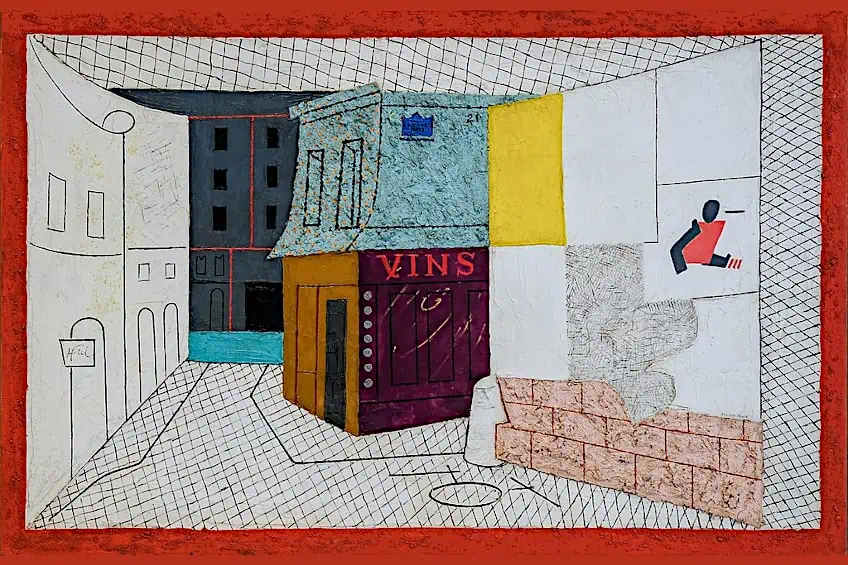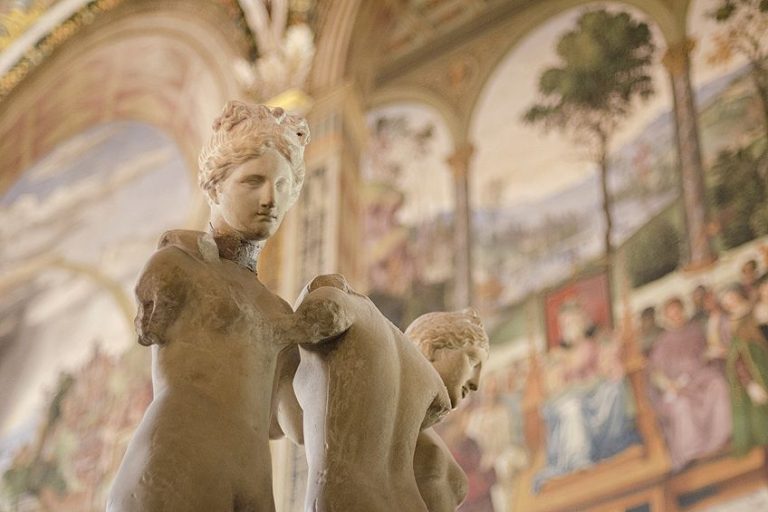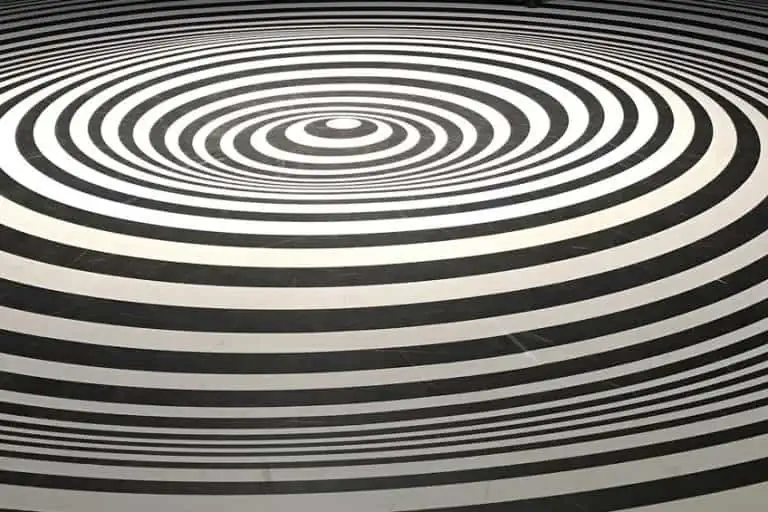Line in Art – How Artists Use Linear Elements
This post may contain affiliate links. We may earn a small commission from purchases made through them, at no additional cost to you.
What is line in art and are there various types of line in art? The line in art definition states that it is an element of art that can most easily be defined as a moving point. To get a better understanding of this element of art, let’s explore line in art further and look at a few examples of line in art.
Table of Contents
What Is Line in Art?
Line may be used to create an endless amount of paintings and drawings. Although people associate line in art with sketching, it is equally essential to painting. The characteristics of a drawn line in art are commonly referred to as line quality. Line quality is often applied when referring to the thickness of a line.
We produce more intriguing designs and convey more information to the observer by modifying the line quality (incorporating both thin and thick lines).
Line Weight
Line weight in the art world describes the line’s thickness, and the line can be dark, heavy, or light. With the right line weight, you can convey depth and distance in your artwork. In general, it determines the line’s ability to visually portray realism. Line weight is represented in your design by its darkness or thickness.
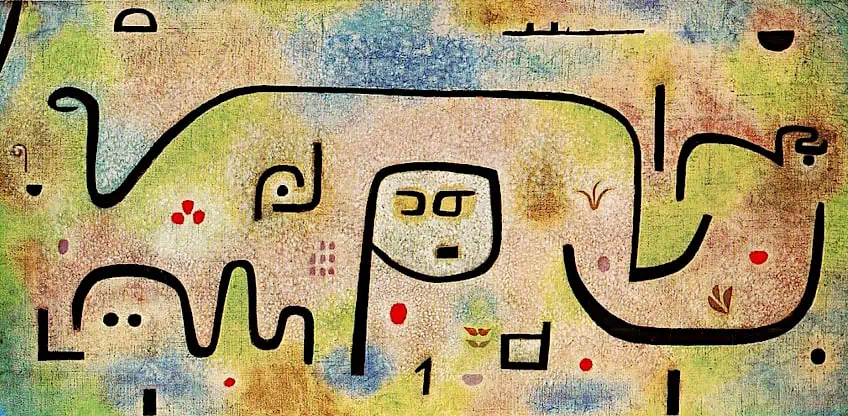 Insula dulcamara by Paul Klee (1938); Paul Klee, Public domain, via Wikimedia Commons
Insula dulcamara by Paul Klee (1938); Paul Klee, Public domain, via Wikimedia Commons
By applying varying pressure to your sketching tool, you can produce different line weights. If you apply more pressure, the line will get thicker.
Adding more pressure will leave more graphite on the surface of your paper, enhancing the line’s weight. You can also change the weight of the line by adjusting the angle of your pencil, as a broader graphite surface will result in thicker lines. If you are an artist that uses pencils, you are probably already aware of the H & B type distinction. H pencils are pencils that are typically used for lighter lines and outlines. An artist uses a B pencil for softer lines, and the bigger the number, the greater the gradient or blackness in the lines.
Line Length
Art lines come in a variety of lengths. They are basically categorized as short and long lines. Small lines are commonly utilized in complex sketching and for creating detailed images. When shading, short lines are also employed; these clusters of small lines add value to the image by adding depth. Short lines are generally formed by moving the wrist quickly in fast succession. Long lines are used for outlines and often indicate an object’s contour lines.
Artists draw longer lines using fluid gestures that emanate from the wrist or even the arm, depending on the scale of the image.
Length in line can be used as a visual guide for the movement of the viewer’s eye. In this way, even a seemingly static and monumental object can acquire a sense of lightness and dynamism.
 Group of Four Trees by Jean Dubuffet (1972); Ppt91, CC BY-SA 4.0, via Wikimedia Commons
Group of Four Trees by Jean Dubuffet (1972); Ppt91, CC BY-SA 4.0, via Wikimedia Commons
Line Type
There are many types of lines in art you can use like straight, curved, vertical, and horizontal lines. Straight lines are typically utilized to design geometrically shaped figures, as they provide the layout and framework of the geometrical figures. When making technical drawings, curved lines may be made utilizing tools like a compass.
 Dazzle-Ships in Drydock at Liverpool by Edward Wadsworth (1919); Edward Wadsworth, Public domain, via Wikimedia Commons
Dazzle-Ships in Drydock at Liverpool by Edward Wadsworth (1919); Edward Wadsworth, Public domain, via Wikimedia Commons
Normally, we draw curved lines freehand without the use of any instruments. In a landscape, the horizontal line denotes the continuity of space beyond the line. It also represents the continuance of space on the image frame’s sides.
Vertical lines in art can convey a sense of power, height, and stability. When you design elements on diagonal lines they can appear imbalanced and lacking stability.
Types of Line in Art
Each type of line performs a unique function within an artwork. Lines can be further subdivided into categories based on their use and application. This includes the horizon line, implied lines, orthogonal lines, and hatching.
The Horizon Line
The Horizon line is where the ground meets the sky, and it is also the eye level of the observer. As you raise your eye level by traveling to a higher elevation, the horizon line shifts and follows you. Sitting on the floor, on the other hand, will cause your horizon line to fall.
The horizontal line is an important feature in perspective sketching. It is the furthest distant point that the human eye can see, and things in perspective become so small that they form a line.
There are items further than that line, but they only appear as this little horizon line. Likewise, the other line continues on the frame’s left and right sides, but you can’t see it.
The Orthogonal Line
In art, orthogonal lines are imaginary structural lines connected to perspective drawing. These lines assist in establishing an object’s three-dimensional appearance on a two-dimensional surface.
They run parallel to the ground’s surface and merge at the vanishing point. This is why they are also referred to as convergence lines.
Orthogonal lines merge at a range from the audience’s point of view. From the point of view of the person’s sight, the things depicted will shrink in size and meet the orthogonal line.
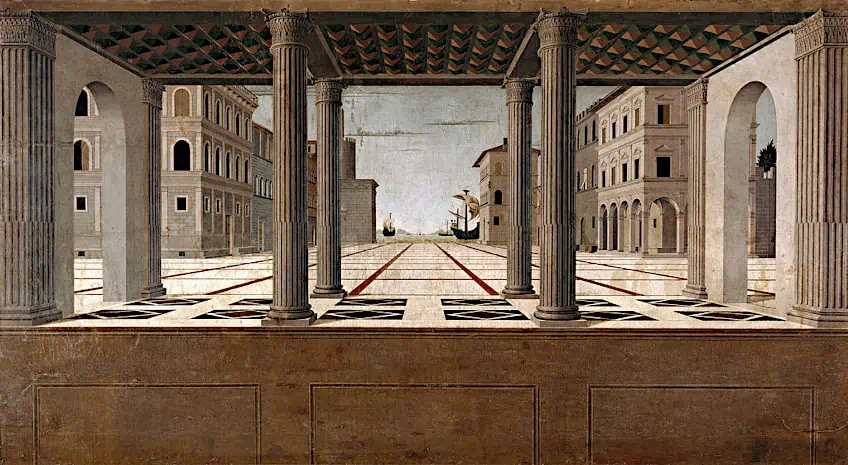 Ideal City attributed to Francesco di Giorgio (c. 1492); Attributed to Francesco di Giorgio, Public domain, via Wikimedia Commons
Ideal City attributed to Francesco di Giorgio (c. 1492); Attributed to Francesco di Giorgio, Public domain, via Wikimedia Commons
Contour Lines
Contour lines are lines utilized in art to delineate the borders of shapes and forms, highlighting and clarifying their contours. They may be used to add volume, depth, and dimensionality to a two-dimensional piece of art. Contour lines can be unbroken, continuous lines that follow the subject’s edges, or irregular, intermittent lines that indicate the presence of edges or variations in surface texture. They can also vary in thickness and blackness to provide varied effects and highlight specific elements of the composition.
 Olympia by Edouard Manet (1863); Édouard Manet, Public domain, via Wikimedia Commons
Olympia by Edouard Manet (1863); Édouard Manet, Public domain, via Wikimedia Commons
Contour lines, in addition to defining the outlines of things, may also be utilized to imply motion, direction, and mood in a work of art. Thick, heavy contour lines, for instance, may impart an impression of weight and sturdiness, whilst light, delicate lines may imply a more ethereal, delicate character.
Implied Lines
Implied lines are lines that are suggested or understood by the context of the piece. These are not genuine lines, but rather effects generated with color, texture, or lighting. It instinctively moves the viewer’s eye from one area of the artwork to another by utilizing subconscious drawing elements. The human brain understands these indicated lines without explanation or assistance.
Drawing a pointing finger is one of the innovative techniques for generating inferred lines, and the observer will notice where the finger is pointing.
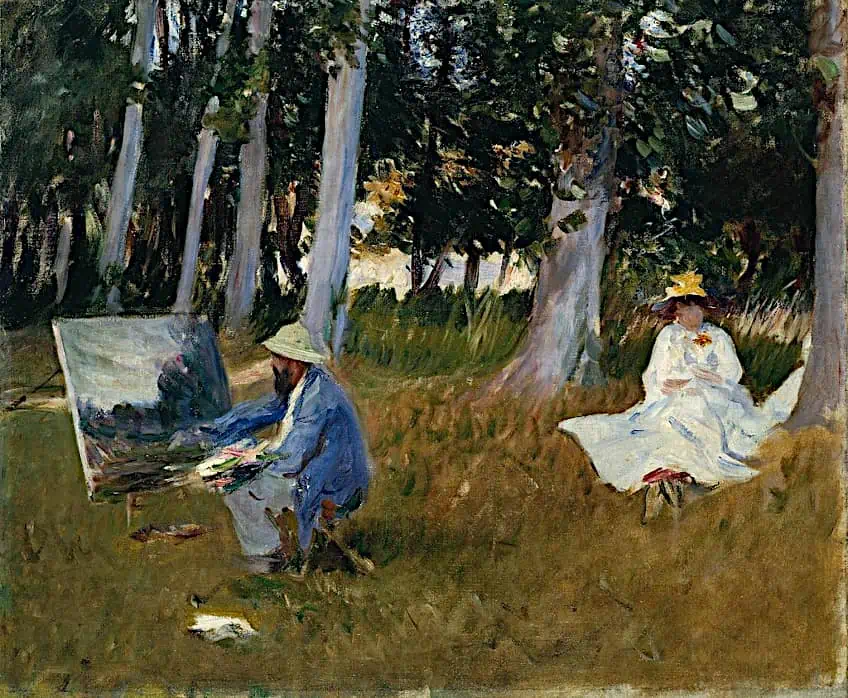 Claude Monet Painting by the Edge of a Wood by John Singer Sargent (between 1883 and 1887); John Singer Sargent, Public domain, via Wikimedia Commons
Claude Monet Painting by the Edge of a Wood by John Singer Sargent (between 1883 and 1887); John Singer Sargent, Public domain, via Wikimedia Commons
Hatching and Cross-Hatching Lines
Hatching and cross-hatching lines are drawing methods that are applied to produce various interesting textures and values. In line drawings, these lines also give the impression of shadow and light. Hatching is the use of freehand small parallel lines to indicate the values within or around the object. We can create the lines more loosely and freely if there is illumination on the object. If we use darkness to depict the object, we create lines tightly to depict shadows.
 Misery by Käthe Kollwitz (1897); Käthe Kollwitz, Public domain, via Wikimedia Commons
Misery by Käthe Kollwitz (1897); Käthe Kollwitz, Public domain, via Wikimedia Commons
Cross-hatching is done by drawing little lines that cross one other freehand. The more lines you draw across each other, the darker the value you wish to draw on the object.
Why Artists Use Line in Art
Lines are an essential element of art that may be employed to produce various effects and express various concepts. Lines are capable of helping define the forms and framework of objects and figures, resulting in the creation of a three-dimensional impression of form in a two-dimensional artwork. Effectively using lines can also make your artwork appear more life-like. Lines can also be utilized to convey motion and directions in an art piece, leading the eye of the viewer through it and providing a feeling of visual flow.
Lines can be used to express mood or emotion, with thicker, heavy lines expressing power and stability and thin, delicate lines conveying fragility or weakness.
Lines may be used to bring texture and complexity to a composition, indicating the surface quality of objects and increasing the artwork’s appeal and depth. In a composition, lines can be used to provide emphasis and contrast, with stronger or darker lines attracting the viewer’s eye and producing visual intrigue and tension.
 Rue des Rats #1 by Stuart Davis (1928); Sharon Mollerus, CC BY 2.0, via Wikimedia Commons
Rue des Rats #1 by Stuart Davis (1928); Sharon Mollerus, CC BY 2.0, via Wikimedia Commons
Examples of Line in Art
Line in art encompasses both fine art categories, such as printing, sketching, painting, and sculpture, as well as digital artworks, applied art decorations, and pattern design. The images produced are unique illustrations of the numerous shapes that a line may take. Prior to the invention of photography, line art was utilized in the form of illustrations that were later used in print manufacturing, with black ink on white paper.
Line art, as an aspect of creativity that exists all around us, contributes to some of the most captivating examples of realistic painting, caricature, abstract line art, cartoon, graphic signage, or typography.
Francisco Goya and Line Printmaking
The field of printing has some of the greatest examples of the traditional idea of what constitutes a line in art. The legendary Spanish artist and printmaker Francisco Goya is responsible for the monochromatic aspect as well as the complexity of lines and surfaces utilized to create some of the most striking images in art history. Goya’s etching from his successful series Los Caprichos is one such example. The print series, which began as an aesthetic experiment, depicts the inherent errors and folly of Goya’s Spanish society.
 Who Else Surrendered. Print no. 26 of the Caprichos series by Francisco Goya (1797-1799); Francisco de Goya, Public domain, via Wikimedia Commons
Who Else Surrendered. Print no. 26 of the Caprichos series by Francisco Goya (1797-1799); Francisco de Goya, Public domain, via Wikimedia Commons
The group of 80 images in aquatint and etching printmaking methods was produced as an album in 1799 and now represents one of the most striking phantasmagoric and unsettling visuals that remark not only on the artist’s culture but also on the world at large.
Leonardo da Vinci and Anatomical Illustrations
Leonardo da Vinci, the famed Renaissance artist, was above all an innovator, propelled by his curious intellect and a drive to learn more and comprehend the entire world surrounding him. His meticulous anatomical line drawings, while not entirely correct in terms of what we know about human anatomy, are the most exquisite examples of a more traditional style of drawing. The pen and pencil sketches exhibit skill and accurate hand direction. The dark portions created using lines show how lines of varied orientations may be used to create a distinction between dark and light regions on the paper without employing dark colors.
The scientific approach to artmaking, along with da Vinci’s desire to examine the world around him, enabled the artist to create some of the most fascinating depictions of the human body, while also pushing the limits and frontiers of both art and science. His line drawings are still highly admired today.
 Anatomical studies by Leonardo da Vinci (between 1504 and 1506); Leonardo da Vinci, Public domain, via Wikimedia Commons
Anatomical studies by Leonardo da Vinci (between 1504 and 1506); Leonardo da Vinci, Public domain, via Wikimedia Commons
Egon Schiele’s Modern Expressive Lines
Egon Schiele is one of today’s most recognized artists. His sexual and highly psychological portraits, self-portraits, countless drawings and studies of female nudity, and depiction of the human body represented one of art history’s significant revolutions.
 Death and the Maiden by Egon Schiele (1915); Egon Schiele, Public domain, via Wikimedia Commons
Death and the Maiden by Egon Schiele (1915); Egon Schiele, Public domain, via Wikimedia Commons
Schiele’s stark and direct output is well-known and distinctive, thanks to his beautiful black line and profound emotion. His drawings and paintings of the intertwined body, now regarded as one of the most famous line artists, represent the concept that a single black line on a variety of surfaces may be perceived as both a sketch and a full piece of art.
Elements of Art Overview
Line in art has been used throughout the centuries in a myriad of innovative and unique ways. As an element of art, the various types of lines in art can be utilized to outline or accentuate elements, or even provide a sense of motion. Without applying a single color or shade, line alone can be used to convey an object, place, person, or even a feeling.
Frequently Asked Questions
What Is Line in Art?
Line is one of the elements of art that is regarded by many to be the most essential when creating artwork. According to the line in art definition, line helps to delineate objects and can even provide them with form and shading, using techniques such as cross-hatching. Lines in art can also serve to add perspective and depth to a piece, such as horizon lines and convergence lines.
What Are the Various Types of Line in Art?
Contour lines are used to provide shape and form to objects in an artwork. Implied lines are also known as suggested lines, and are the lines of observation created by the arrangement of various elements within an artwork that draw the eye around the canvas. Cross-hatching lines can be used to add shading to an object, as well as texture or a sense of depth. The horizon line can be added to give your artwork a sense of depth and dimension.
In 2005, Charlene completed her wellness degrees in therapeutic aromatherapy and reflexology at the International School of Reflexology and Meridian Therapy. She worked for a company offering corporate wellness programs for several years before opening her own therapy practice. In 2015, she was asked by a digital marketer friend to join her company as a content creator, and it was here that she discovered her enthusiasm for writing. Since entering the world of content creation, she has gained a lot of experience over the years writing about various topics such as beauty, health, wellness, travel, crafting, and much more. Due to various circumstances, she had to give up her therapy practice and now works as a freelance writer. Since she is a very creative person and as a balance to writing likes to be active in various areas of art and crafts, the activity at acrylgiessen.com is perfect for her to contribute their knowledge and experience in various creative topics.
Learn more about Charlene Lewis and about us.
